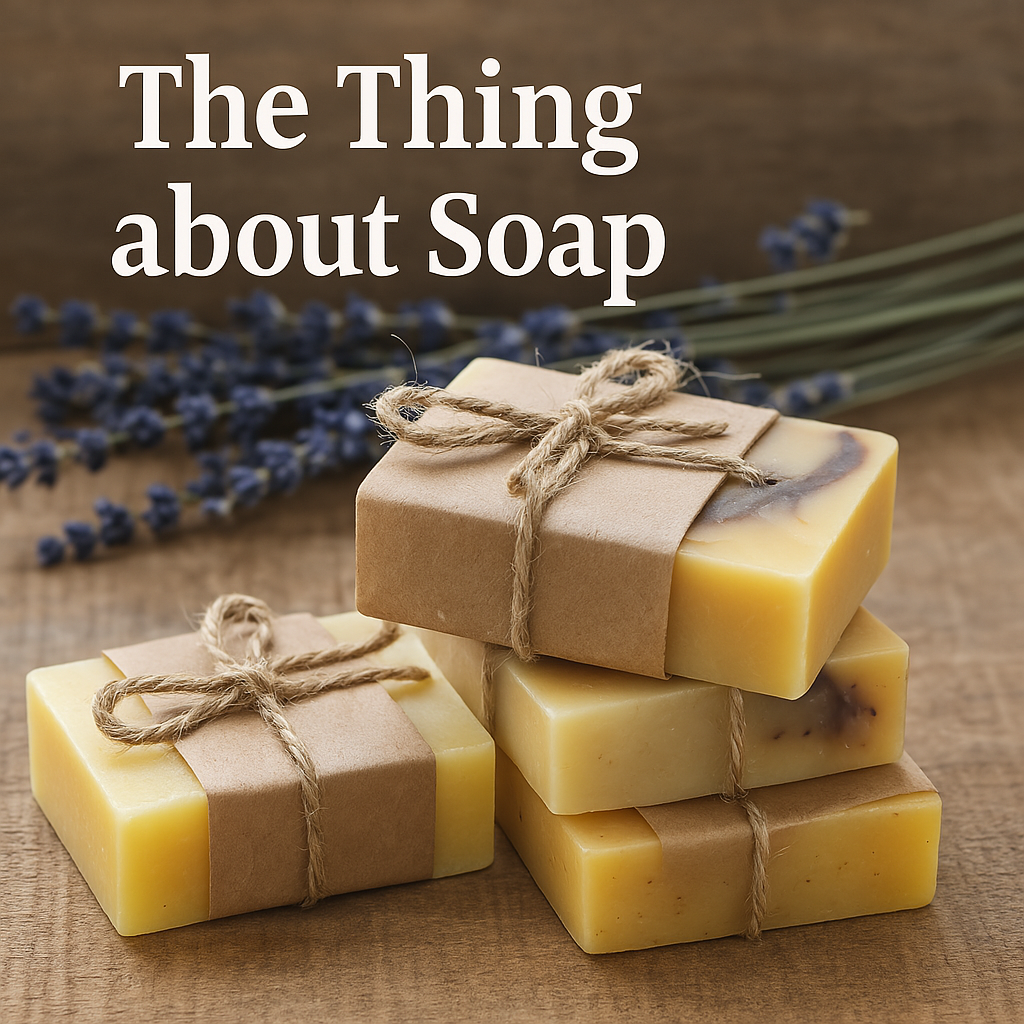It used to be that family bathrooms would be furnished with the requisite bars of Zest and later, much gentler-sounding labels like Dove or Caress. In the 80's we got to lather with liquid soaps of the same names as bars were deemed to be "messy" and time-wasting.
I don't know about you, but I always take the tiny soaps from hotels, especially if they have organic-looking wrappings or natural scents like eucalyptus lemon or tree bark and barley. The advent of the liquid dispenser has hampered my affinity for petty theft. It's also hampered the potential for aesthetic accents in the hotel bathroom.
The Rise of Natural Bar Soap
The growing presence of natural bar soap—often wrapped in handmade paper, pressed with dried herbs, and smelling like a hike through the woods—has changed the landscape altogether.

Today, we consumers of hygiene are scrutinizing the elements of the potions intimate with our skin, such as sulfates, triclosan, parabens, phthalates, synthetic fragrances, formaldehyde releasers (like DMDM hydantoin), and certain synthetic preservatives. If you're not stealing the good stuff from high-end hotels, where do you get a skin-friendly, hypo-allergenic, organic bar of soap? It's not in an upturned bottle mounted on a shower wall, that's for sure.
What’s Really in Your Soap?
What we're finding is that soap is not just about suds, despite what the bubbly TV commercials and magazine ads depict. Cleanliness does not come from lather, it comes from the ingredients in the cleansing agents of soap. The chemical formula of soap = C17H35COO-Na+ and C15H31COO-Na+ Do you want to know about this? Probably not. Let's break it down.
The cleansing element of soap and detergents is "surfactant," a blend of surface-active agents. On the molecule train, one end loosens dirt and grease, the other attracts it. This is how we get things and ourselves clean. This miracle of chemical elements, when applied to something we take for granted, like soap, can elevate it to a skin-friendly, environmentally sound staple of the household. If it's done right.
The down and dirty is that the altered chemicals found in the soap aisle of the grocery store are not necessary for personal hygiene. Imagine that the cleaning "agents" caressing your skin are lemongrass, local honey, calendula flowers and a touch of aloe vera juice. "Does this get me clean?" you might ask? "Or is it just lovely to smell, gorgeous-on-a-bamboo-slab next to my sink, or a fascinating mystery to hoteliers around the world who can't get their heads around 'big bar' soap?"
Less is bliss. Commercial soaps are made with synthetic ingredients, used to enhance lather and, importantly, shelf life. TV commercials feature lather as the purpose of soap and the means to cleanliness. Bubbles don't mean clean. Lather is, yes, a byproduct of the essential components of soap and water, but the quantity of foam does not mean greater hygiene or healthier skin, and it definitely does not bode well for a clean rinse.
Handmade Soap vs Commercial Brands
Here's where store-bought bars and curated, natural bar soap varieties diverge. Handmade soap benefits include the use of nourishing, plant-based oils like coconut, olive, almond, avocado, and fruit extracts—plus shea butter as an emollient. These are not just gentler, they actually support the skin's moisture balance. They incorporate essential oils for fragrance and skin-boosting properties: orange, vanilla, ginger, bergamot, clary sage, pure lime, and frankincense. The color comes from nature. The love is organic.
Commercial brands are looking to sell quantity, not quality, and their ingredients are designed to appeal to the masses, to leverage shelf-life, and occasionally to mimic the increasingly popular cottage industry brands. We're seeing more interesting flavor combinations like lavender and citrus or lemon and rosemary. It seems as if Herbal Essences was ahead of its time! Packaging has evolved as well, but remember that labels often embellish the true nature of the contents.
The handmade soap market is expected to reach more than $224 million by 2031 as consumer demand for sustainability, personalization, and natural ingredients increases. Further, as consumer awareness of skin health advances, people want more from something they come in contact with on a daily basis. It's a natural fit and there's no bubble, financially. Getting back to basics can be a win-win for the industry and consumers on the lookout for wholesome, high quality ingredients and made with love.
